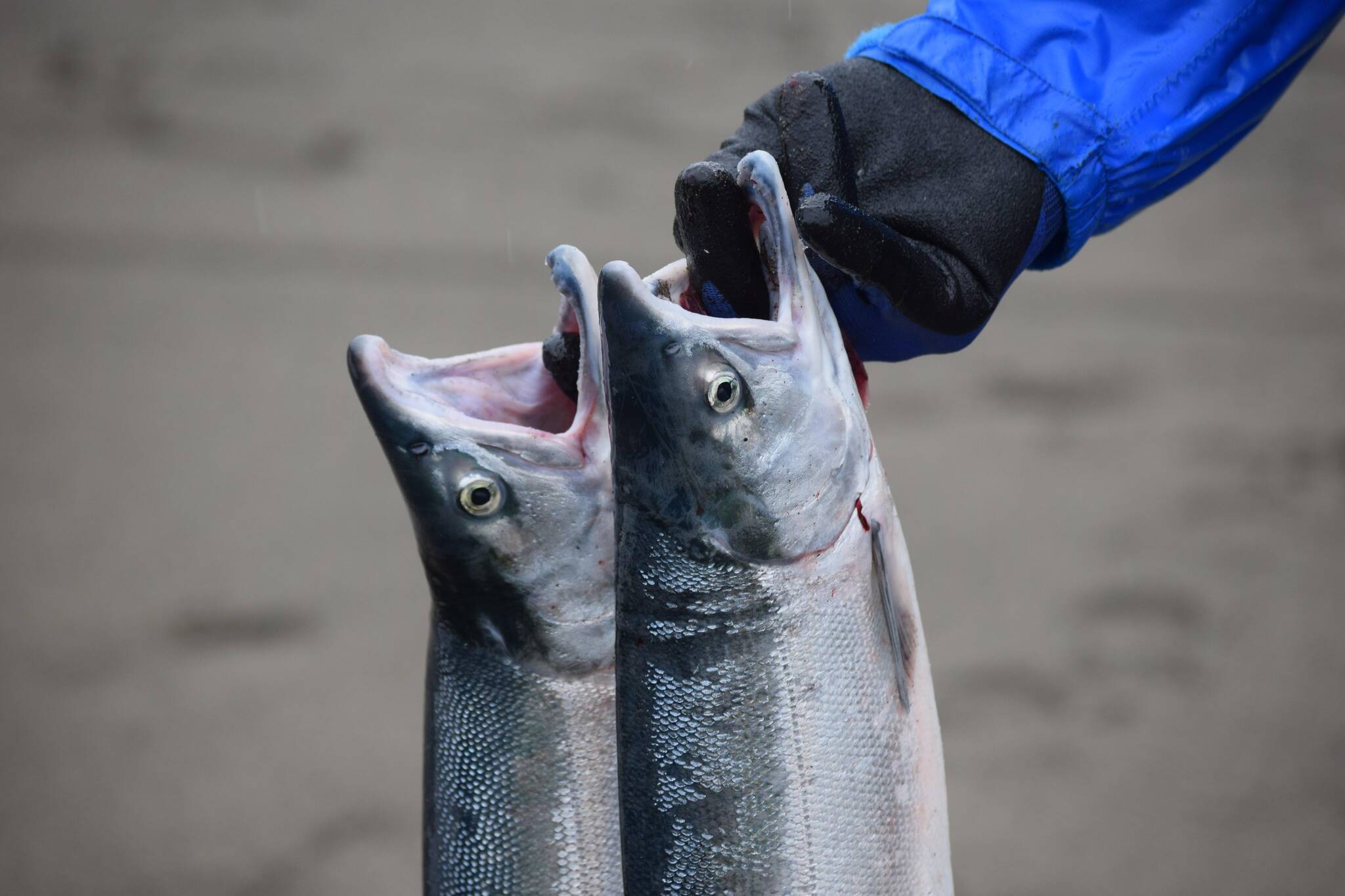The State Department of Fish and Game earlier this month published its annual statewide salmon run forecast and commercial harvest projections, as well as a review of last year’s season.
Cook Inlet is divided into the Upper and Lower Cook Inlet by the department, around the longitude line of Anchor Point on the Southern Kenai Peninsula.
In the Upper Cook Inlet, which includes the Kenai and Kasilof Rivers, the department is projecting an “average” season for sockeye salmon, with a total run forecast of 5.12 million fish. That forecast is the largest for the species since 2019.
Of that run, the department says it estimates that 3.12 million fish will be available for harvest across the commercial, sport, personal use and subsistence fisheries.
For Kenai River, the forecast is 2.82 million sockeye, around 765,000 fewer than the historical average of 3.59 million. The prediction is also fewer than last year’s forecast.
In the Kasilof River, the forecast is 1,126,000 sockeye. That count is greater than any projection for the river in the last 10 years and exceeds the historical average by around 180,000.
In the Upper Cook Inlet, the commercial harvest forecast for pink salmon is 83,000, chum at 89,000 and coho at 157,000.
The report also includes detailed reports about last year’s salmon season.
In the Upper Cook Inlet, sockeye salmon runs in 2022 exceeded preseason forecasts by 300,000 fish, with a total estimated run of 5.2 million.
The commercial salmon fishery harvest was 1.4 million, falling 44% below the 10-year average harvest, which is 2.5 million. That harvest was composed of around 2,000 chinook, 1.1 million sockeye, 103,000 coho, 101,000 pink and 99,000 chum.
As sockeye salmon runs were exceeding forecasts, the report said, chinook runs fell below forecasts in the 2022 season, resulting in the closures of fisheries to reduce chinook harvest. In the Kasilof and Kenai River, this was in pursuit of meeting optimal escapement goals set by the Board of Fisheries. That OEG is 15,000-30,000 large chinook salmon — greater than around 34 inches. The run was estimated to be 13,425, falling below the OEG.
The OEG has not been met in the fishery since it was implemented in 2020.
Chinook runs in the Anchor River and the Ninilchik River also failed to meet sustainable escapement goals.
Commercial harvest of chinook in the region was 2,278 fish. The East Side Setnet fishery harvested 341 of those, 32 of which were of large Kenai River late-run origin. The drift gillnet fishery harvested 167 chinook.
Sockeye abundance fell below forecasts in the Kenai River by 220,000 fish, but exceeded forecasts by 554,000 in the Kasilof River. Sockeye met SEG in the Kenai River, and exceeded the OEG in the Kasilof River by around 600,000 fish.
Sockeye harvest fell below the 10-year average in every part of the Central District, including the Kenai River and the Kasilof River.
The report said there are four coho salmon systems in the Upper Cook Inlet with escapement goals. Floods left counts incomplete at three of them. The fourth is an on-foot survey in Jim Creek, which was found to exceed its SEG.
All coho salmon commercial harvests in the Upper Cook Inlet fell below their 10-year averages.
Pink salmon harvests are even-year dominant in the Upper Cook Inlet, the report said. Last year’s harvest of 100,998 fish fell far below the 10-year average for those even-year seasons, which is 363,813 fish.
Chum salmon harvest also fell below averages.
To view the full report, search for “Run forecasts and harvest projections for 2023 Alaska salmon fisheries and review of the 2022 season” at adfg.alaska.gov.
Reach reporter Jake Dye at jacob.dye@peninsulaclarion.com.


